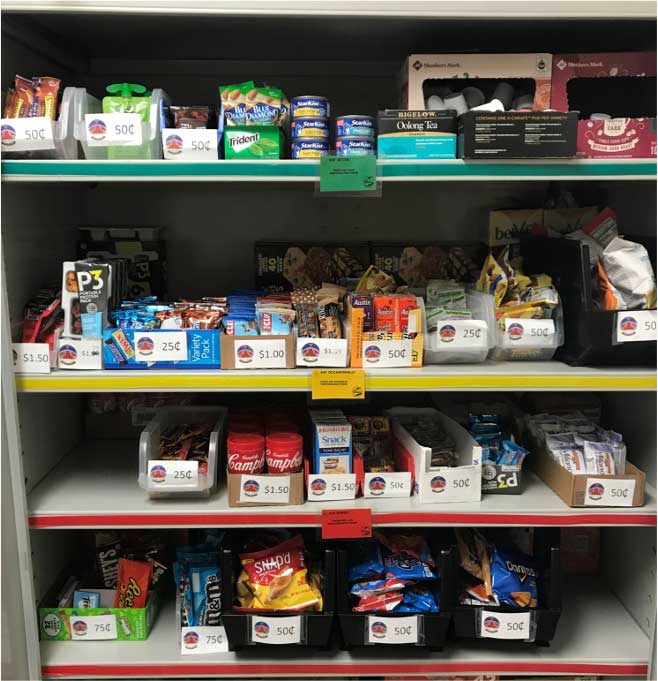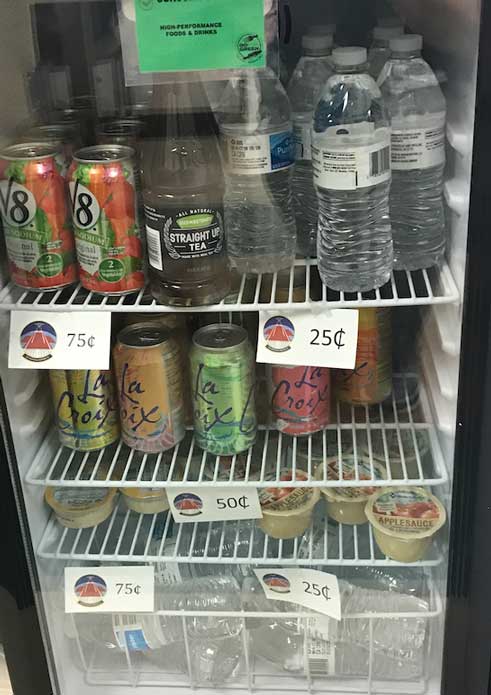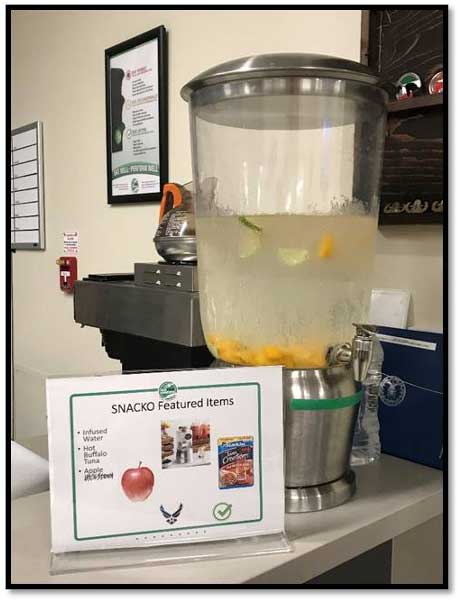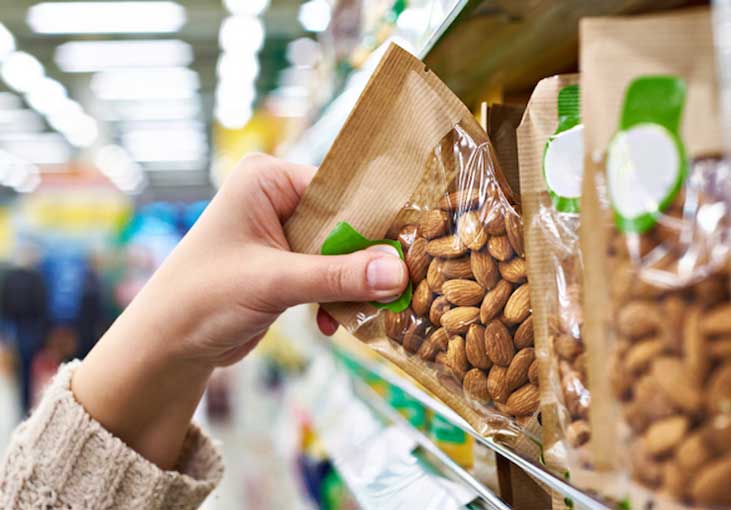 Snack bars can be a convenient way to fuel throughout the day, especially for Service Members limited on time. However, snack bars are often full of foods and drinks high in calories and added sugar and low in nutritional value. Worksite and snack bar nutrition policies can help increase Service Member access to healthful, performance-enhancing foods and drinks.
Snack bars can be a convenient way to fuel throughout the day, especially for Service Members limited on time. However, snack bars are often full of foods and drinks high in calories and added sugar and low in nutritional value. Worksite and snack bar nutrition policies can help increase Service Member access to healthful, performance-enhancing foods and drinks.
You might find it easier to develop a worksite or snack bar nutrition “philosophy” rather than a formal policy. Philosophies act as a guide to help worksites offer high-performance foods and drinks.
These policies or philosophies can be created and enacted at different levels of leadership. It might help to start with a specific unit whose leadership is interested in developing a nutrition-forward policy. Once this unit has successfully implemented its policy, it might be easier to implement in other similar units or scale it up to larger departments (for example, medical) or an entire installation.
69% of leaders report they would support a healthy eating policy.
“I think it’s a great opportunity to eat cleaner.” – Anonymous
“I think this is a much needed improvement to our Force.” – Anonymous SQ/CC
 Although it might have seemed daunting at first, multiple snack bar and worksite policies and philosophies have been implemented in installations across the DoD. In addition, there are many resources to help with developing these important policies to help improve your local nutrition environment.
Although it might have seemed daunting at first, multiple snack bar and worksite policies and philosophies have been implemented in installations across the DoD. In addition, there are many resources to help with developing these important policies to help improve your local nutrition environment.
- Use the Go for Green® ready-to-use item database—that contains more than 1,300 foods and drinks—to assist with coding efforts.
- Refer to federal or health organization guides for tips to increase healthy options in the workplace.
- The Centers for Disease Control and Prevention’s Tips for Offering Healthier Options and Physical Activity at Workplace Meetings and Events (PDF)
- National Alliance for Nutrition and Activity Healthy Meeting Toolkit (PDF)
- Simply copy and paste the templates below to draft a new local policy or philosophy. You can mix and match information from the templates or use them as a guide to develop your own memo.
EXAMPLE: Worksite Philosophy
SUBJECT: Promoting Healthy Workplace Food and Beverage Choices
- Your health and well-being are top priorities when it comes to performance and readiness. When we’re at our best physically, mentally, socially, and spiritually, our personnel are an enhanced Force. As you spend many of your waking hours in the workplace, it’s important to know what’s available, especially the healthy choices. With your health in mind, assess your eating and drinking habits and consider making adjustments as needed.
- In addition, we encourage unit commanders, supervisors, worksite food purchasers, and event organizers to offer healthy food and beverage options at meetings, functions, fundraisers, and other group events as outlined in the provided attachment. Together, we can institutionalize a mindset based on healthy, conscious decisions.
- Improve the availability of healthy options.
- Beverages. Water, unsweetened tea, coffee, and 100% fruit or vegetable juices.
- Food. Fresh whole fruits, nuts, low-sugar Greek yogurt, 100% whole-wheat bread (for sandwiches), and other Green-coded items (categorized by the Go for Green® [G4G] program).
- If you have any questions or would like additional suggestions for improving the health of your workplace, contact [your name].
EXAMPLE: Snack Bar Policy
SUBJECT: Snack Bar Nutrition Policy
- As your commander, I’m committed to provide an environment that encourages healthy eating habits among our personnel. This policy will support positive lifestyles for Service Members and is designed to make healthy choices more appealing, more affordable, and more available in our worksite snack bars. It’s not designed to restrict choices. Each Service Member assigned to this unit is responsible for maintaining a healthy lifestyle by practicing positive nutrition, sleep, and exercise habits.
- Go for Green® (G4G) is a DoD program that helps identify foods and beverages that help Service Members perform their best by emphasizing minimally processed foods and beverages. This program was designed for optimal performance within our military ranks. G4G incorporates food labeling and placement strategies, promotional signage, and nutrition-education messaging to empower and motivate Service Members to make healthful eating choices.
- The snack bar will meet the following requirements:
- There will be at least one G4G snack bar monitor fully trained on program requirements at all times. The snack bar monitor(s) will follow product placement guidelines as well as purchase items associated with the criteria noted for Green-, Yellow-, and Red-coded items. Snack bar monitor(s) should make every effort to provide a variety of healthy food and beverage options by following the designated G4G program guidelines.
- The snack bar will offer a minimum of 20% Green-coded items and no more than 35% Red-coded items.* Red-coded items will not be sold at a discount. All items sold (cash or credit) will be entered in the point-of-sale (POS) system.
- Energy drinks and energy shots are heavily used by many Service Members, but they can negatively impact mission readiness when overconsumed or otherwise used inappropriately. Energy drinks sold at the snack bar will not exceed 200 mg of caffeine per bottle. Red-coded energy drinks will be sold at a 25% higher price than similar Green- and Yellow-coded items.
- Making a commitment to increase the availability of performance-enhancing foods and drinks at our unit directly impacts human performance and mission readiness. If you have any questions, contact [your name].
*Suggested ranges: At least 20–50% Green-coded items and no more than 20–35% Red-coded items.
You can also follow these general guidelines to create your own policy for your installation.
 Start with letting readers know why this policy is being put in place. Briefly explain that this venue is part of the nutrition environment and why it’s beneficial to have healthy items available at your worksite or snack bar.
Start with letting readers know why this policy is being put in place. Briefly explain that this venue is part of the nutrition environment and why it’s beneficial to have healthy items available at your worksite or snack bar.
- Include any Service-specific guidelines to lend support to your guidelines.
- Explain your policy and the guidelines for any venues that have snacks available (worksite, meetings with snacks, etc.). Use subparagraphs for the guidelines to help make things clear for readers.
- Identify healthier high-performance options. For example, label foods and drinks that meet the criteria for G4G Green-coded items. Start out by only coding drinks followed by more categories (for example, snacks) as feasible.
- Provide a benchmark for the amount of healthier options. For example, a certain percentage of caffeinated drinks must be Green-coded options (caffeinated water, coffee with no or low sugar, unsweetened teas, etc.).
- Require whole foods (apples, oranges, etc.) to be available at the worksite or snack bar.
- Briefly summarize the impact this policy can have on the installation.
- Provide point of contact information.
![]() If you have any questions, concerns, or policy template or ideas you’d like to share, contact CHAMP’s MNE team at mNEAT@usuhs.edu.
If you have any questions, concerns, or policy template or ideas you’d like to share, contact CHAMP’s MNE team at mNEAT@usuhs.edu.
